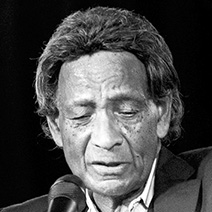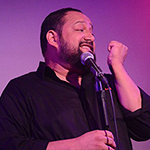The Frank Holder Sextet
Pizza Express Jazz Club, London, U.K., April 10, 2016
Reviewed by Helen Theophanous for Cabaret Scenes
 1925 was a very good year. It was the year Frank Holder was born.
1925 was a very good year. It was the year Frank Holder was born.
https://pinnacle.berea.edu/wp-content/languages/new/how-to-write-a-good-argument-essay.html
From the very first notes of the opening number “Lover” (Rodgers & Hart), one had to look up to confirm that the superb, clear, sonorous, honeyed tones were coming from a 91-one-year-old voice.
https://pinnacle.berea.edu/wp-content/languages/new/custom-research-paper-writing.html
Frank Holder is simply phenomenal. The sound brings to mind Nat King Cole or Sammy Davis, Jr. and the style and laid-back phrasing is reminiscent of Sinatra. But Holder is unique in his delivery.
https://pinnacle.berea.edu/wp-content/languages/new/write-a-research-paper-for-me.html
He can dismantle a song and put it back together in his own distinct style, bringing fresh emotion to the words with superb legato phrasing soaring into a sweet falsetto, or with an energetic easy rhythmic energy.
Holder is also a superb percussionist and the conga seems almost to be a part of him. He no longer jumps in the air with the conga between his knees as he did decades ago, but the rhythm is just as strong.
He demonstrated his credentials as a supreme master of bebop with consummate ease on “Sundance” (Geoff Castle/Julie Amiet) “Professor Bop” (Dizzy Gillespie) and in “Every Day I Have the Blues” (Memphis Slim, Aaron & Milton Sparks). There was complete ease of connection between the musicians—M.D. Geoff Castle on keys, Stan Robinson (tenor sax), Les Cirkel (drums), Val Mannix (bass), and Shane Hill (guitar)—which communicated to the audience, with the odd humorous remark for good measure. Holder has his own catch phrase, too, coupled with a cheeky glance: “How much of this can you stand?.” The enthusiastic calls for an encore answered that question.
When Holder does stand up from the congas, he moves with what can only be described as sultry, easy, hip movements to numbers such as “Brazil” (Ary Barroso/Sidney Russell), bringing a strong flavor and energy of carnival to the stage. Every song was a masterclass in performance and entertainment. The Latin numbers, such as “Tangerine” (Victor Schertzinger/Johnny Mercer) and “Caravan” (Juan Tizol), were on fire as he interacted with the band. Holder can also swing his way through any number and still bring his own definitive style and phrasing to the song as in “Lover,” “What Is This Thing Called Love?” (Cole Porter) and “A Foggy Day (in London Town)” (the Gershwins).
But Holder is also a master of the ballad. “Body and Soul” (Johnny Green/Edward Heyman/Robert Sour/Frank Eyton) was a joy, and “Speak Low” (Kurt Weill/Odgen Nash) was moving and meaningful. But for me, “Time After Time” (Sammy Cahn/Jule Styne) was the most poignant performance as Holder poured his decades of experience into the lyrics, his personal emotions showing through each note.
Holder was presented with the great honor of The Lifetime Achievement Award by the Worshipful Company of Musicians in the City of London in 2015 in recognition of the fact that he has been a major and valuable part of the British jazz scene for over 60 years since arriving from Georgetown, Guyana during World War II and serving in the Royal Air Force. He has worked alongside such names as Nat King Cole and Billy Eckstine, and toured with Tubby Hayes and Joe Harriott. For many years, he was a member of the world famous Dankworth Seven with Sir John Dankworth, and it was he who taught the young Cleo Laine the art of jazz improvisation. Holder now appears regularly in London with Geoff Castle’s Latin fusion band Paz.
The gig was presented by John Levett of The Listening Room Music Agency who presents another Frank Holder gig on Sunday August 14 at Ronnie Scott’s Club London with the Geoff Castle Trio.





